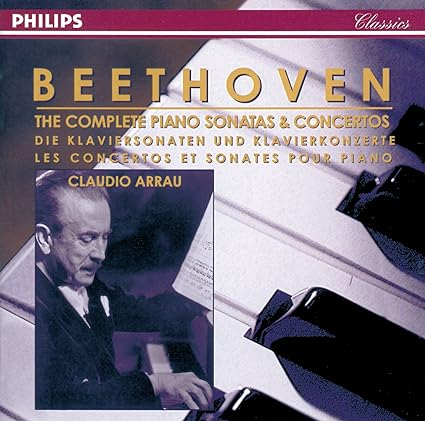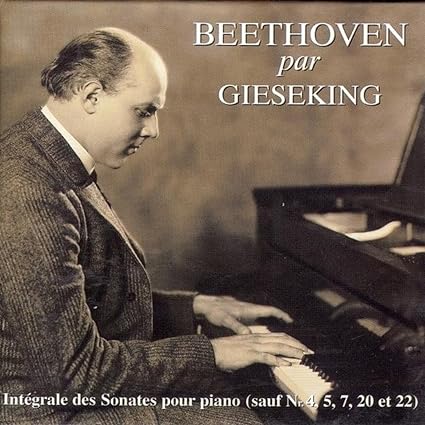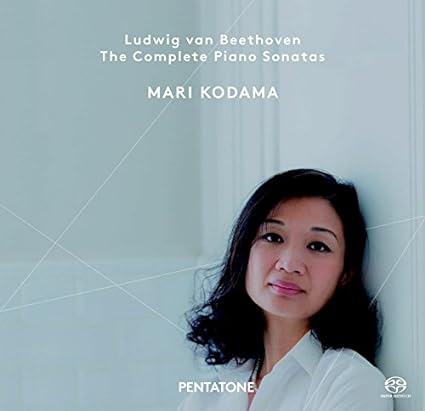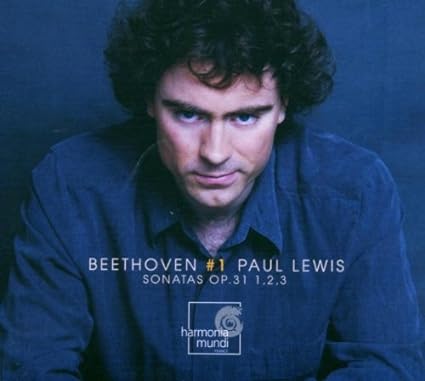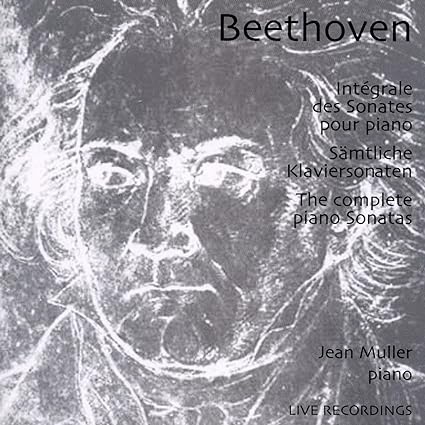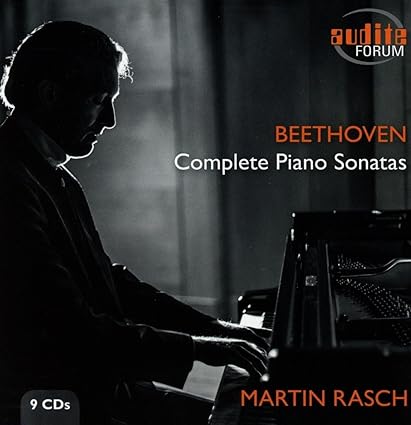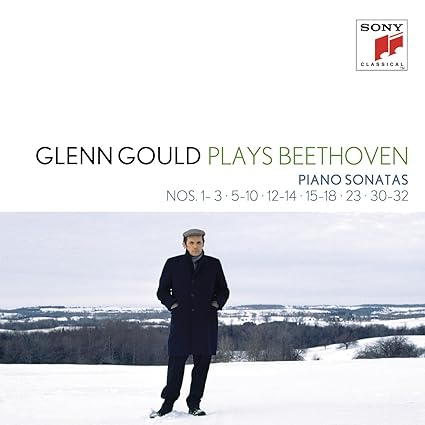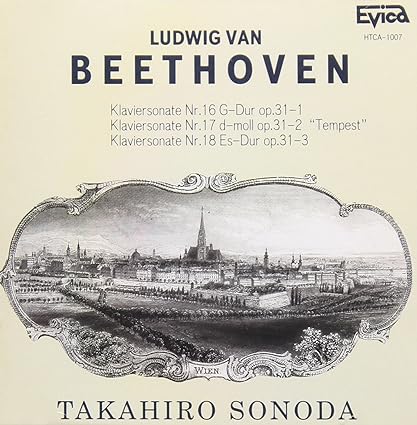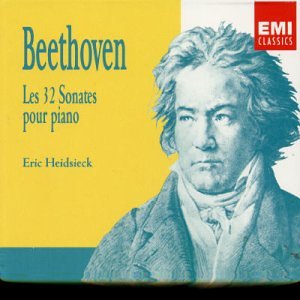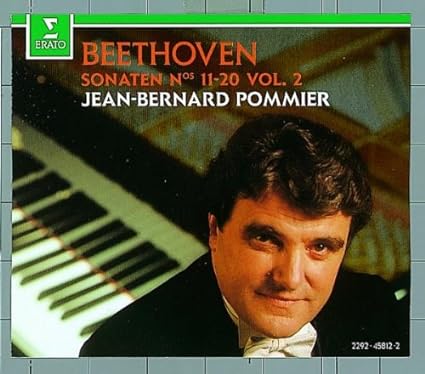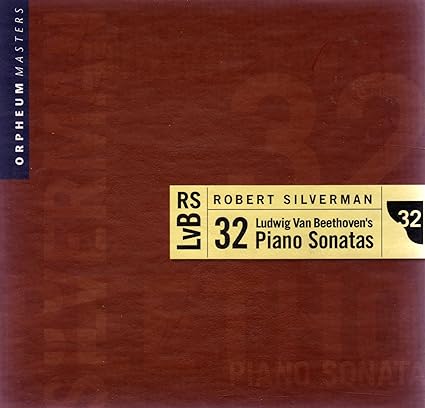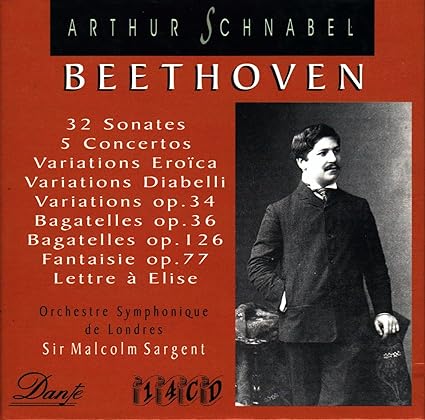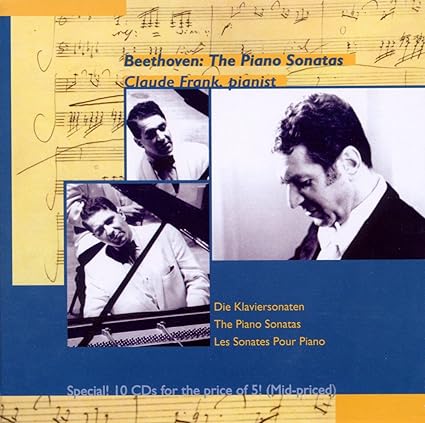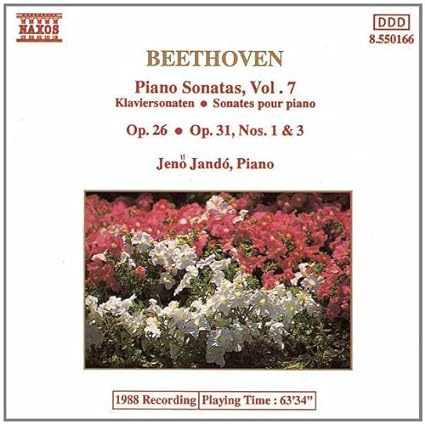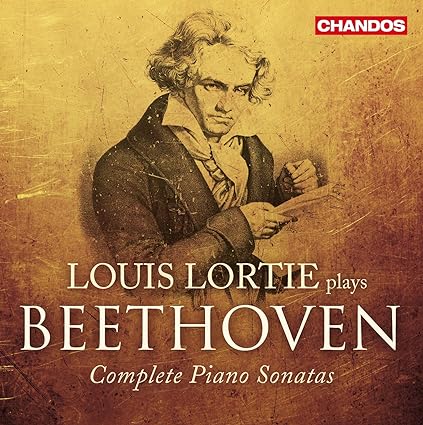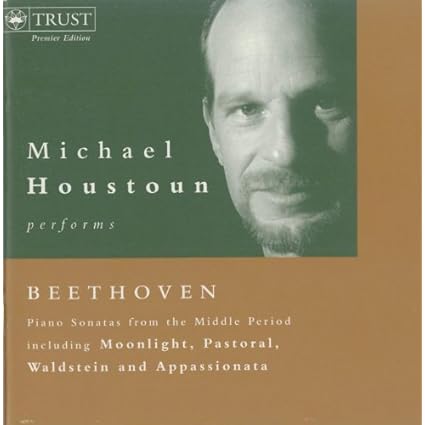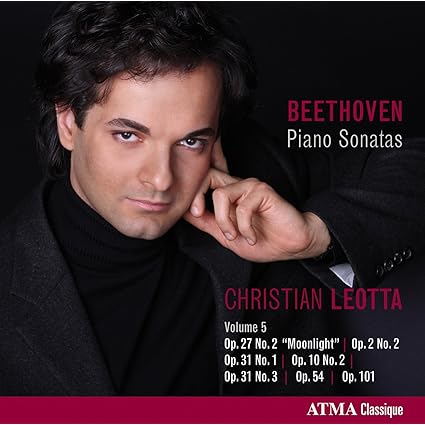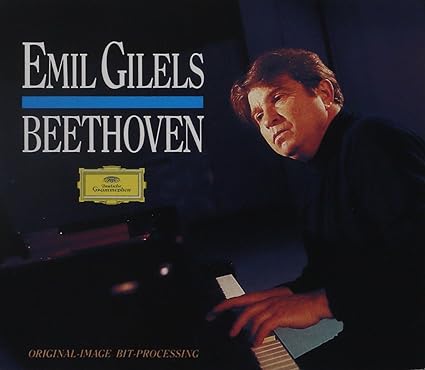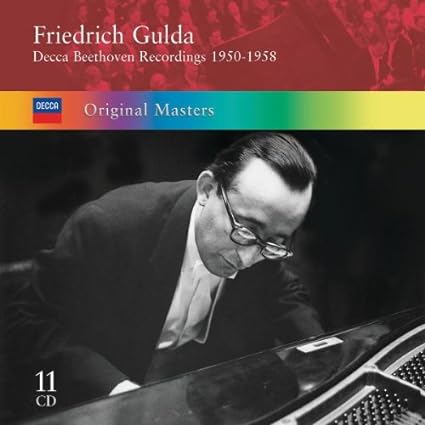
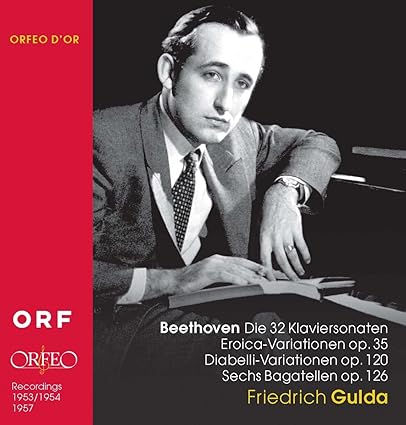
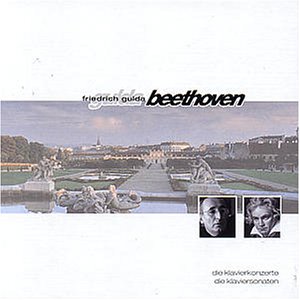
Friedrich Gulda. Time for an eight hundred pound gorilla. In the Decca recording, Gulda starts off kinda slow and definitely soft, displaying nice tonal variation, and as the movement speeds up, he keeps things fairly soft much of the time. No hard-hitting playing here, though the aged sound plays a part. The mien is also light but serious. Prankish fun is a lesser priority. The whole movement has an air of smoothness to it, which is all the more impressive since the playing is swift without sounding especially swift. In the Scherzo, the young Gulda picks up the pace, and here a more prankish sense emerges, as do broader dynamics. There's again a sort of effortlessness to the swift tempo and the dynamic contrasts are superbly done. The Menuetto is taut and attractive in the outer sections and light but punchy in the Trio. The Presto is clean, light, fun, dynamically varied, has some rumbly-ish bass, and, most important, unerring rhythmic goodness. It's a superb recording - and it's the weak one of the bunch.
Gulda ramps things up in the Orfeo recording. The cleaner though still aged sound reveals more dynamics contrasts, and Gulda zips through the Allegro with improved rhythmic snap and a freer, funner, though still serious sound. And that left hand playing! Then comes a bopping, rocking Scherzo, with, for the time and type of recording, kick-ass forte (or rather fortississimo) playing. The playing could be described as jittery, except it’s too steady, too clean. It's almost a musical machine gun rat-a-tat-tat effect. Gulda keeps the outer sections of the Menuetto quick, remarkably un-tense given the tempo, and quite lovely. He then plays the Trio as a mix of satisfyingly lyrical episodes and punched out ones. Given the Allegro, it's not at all surprising that the Presto is all bouncy rhythmic greatness, clean 'n' clear fingerwork, bold dynamics, and good time, but still in a serious way playing. One of the great recordings. But it's still only the second best recording from Mr Gulda.
The Amadeo recording is where it's at. Basically, it takes the Orfeo recording's approach, adds small dashes of the Decca recording's smoothness, and then introduces a degree of flexibility, including playing that sounds almost downright relaxed, in a loosely coiled yet ready to strike sort of way, to render something well-nigh perfect, at least as far as classical style interpretations go. Too, there's more of a sense of fun in some of the playing. One for the ages.
